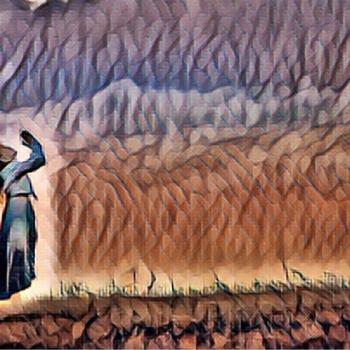
At a recent Red Bench event (my new favorite gathering in Central Texas) we engaged in a discussion about tribes. The conversation was far-reaching, touching on all aspects of the topic, but instead of trying to cover everything that we discussed, let me share with you the most important insights I came away with.
Types of Tribes
Humans are tribal beings with the ability to bond with approximately one to two hundred people. However, because of increased population and the reach of social media, the concept of the tribe has expanded.
While listening to the conversation, I wrote down a partial list of different kinds of tribes that exist in our society. Here’s my list in no particular order.
- Blood/Family
- Geography
- Unity of Purpose
- Sports
- Unity of Humanity
- Friendship
- Unity of belief
- Unity of political ideology
- Tradition
- Language
- Economic interests
- Unity for the purpose of protection
Two things popped out at me, (1) the height of the entry barriers to each of these tribal types differ greatly, and (2) the glue that holds them together is of varying strengths.
Entry Barriers
The highest entry barrier is blood or family. The only way to get into that tribe is through birth, adoption or marriage.
The second highest is geography. People who have moved from one place to another know that the locals—i.e. people who were born and raised in a certain area—have a stronger link that binds them than the newcomers can ever create.
The third highest barrier is language and so on.
As such, it is easier to join a sports fan tribe, where the entry barrier is affiliation to the team than to join a friendship tribe, where time, experience, and degrees of trust play a vital role. Of course, when you mix family and geography with sports, then the entry barrier becomes higher and you have to prove yourself to belong.
On the other end of the spectrum, the tribe with the lowest entry barrier is the tribe of humanity, to which we all belong.
The Glue
As I reflected, I noticed that there is a strong relationship between the height of the entry barrier and the strength of the glue that holds the tribe together; as in, the higher the entry barrier, the stronger the glue.
“Family sticks together.”
“Friends forever.”
“Go [fill in the blank] fans.”
In addition, the more elements you mix together, the stronger the glue becomes. The most cohesive tribes are usually the ones that share the largest number of high entry barrier elements, such as, geography, language, unity of protection, unity of purpose, unity of belief, tradition, friendship, etc.
From Cohesion to Aggression
From an evolutionary standpoint, belonging to a tribe has been absolutely vital, and, even today, there is much good that can be said about strong cohesion. It provides everything from a network of physical, emotional, and financial support to a personal identity, strong emotional connections, and much more, with a sense of belongingness at its core.
Nobody can deny that belonging creates a special feeling.
However, tribal mentality can easily go from, “We are great together,” to, “It’s us against them.”
Where that line is exactly is hard to tell, but historically tribes are probably best known for having crossed the line from cohesion to aggression over and over again.
I guess that’s why many of the people at my table started the conversation with mixed feelings about the tribal concept.
Things to Contemplate
I don’t have all the answers, but here are several things to contemplate.
Think about the tribes you belong to, the strength of the glue that holds them together, the height of the entry barriers that surround those tribes, and where the line between cohesion and aggression lies.
As an Interfaith Minister, my biggest takeaway was that we all belong to the human tribe. Even though the entry barrier to that tribe is low, we must strive to make the glue stronger.
Gudjon Bergmann
Interfaith Minister & Author
Follow me on Facebook and Twitter
Visit Experifaith.org
Pictures: Pexels.com CC0 License












